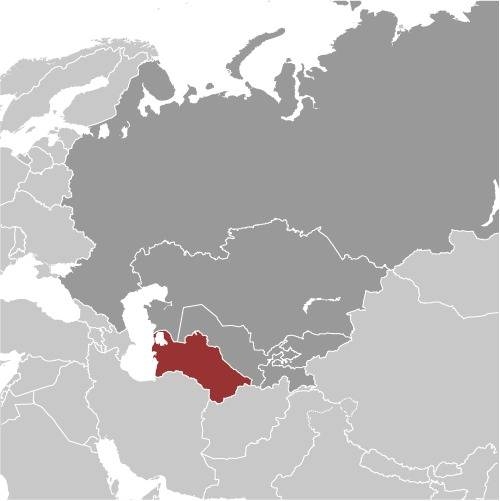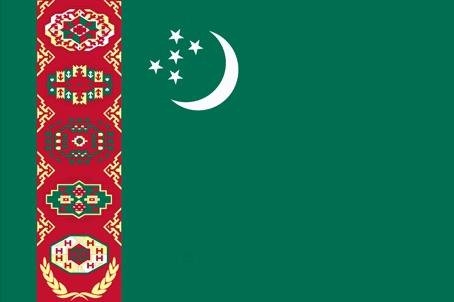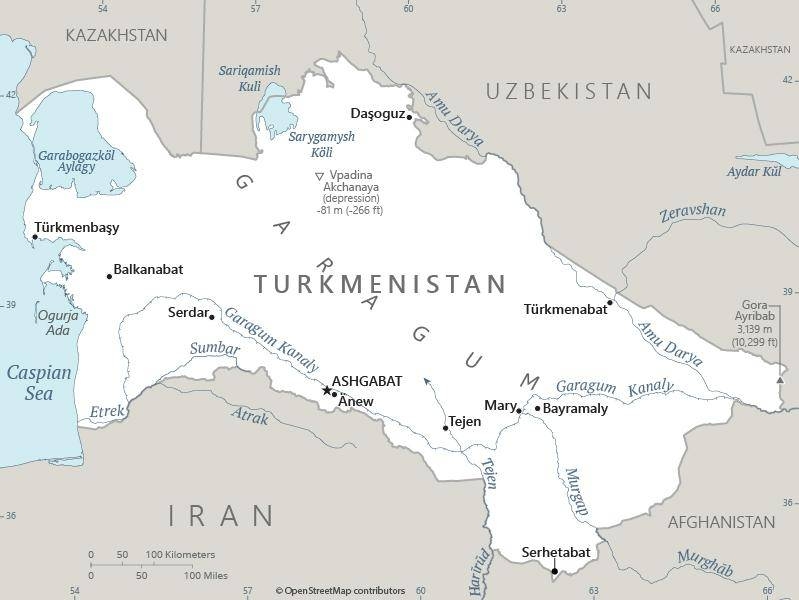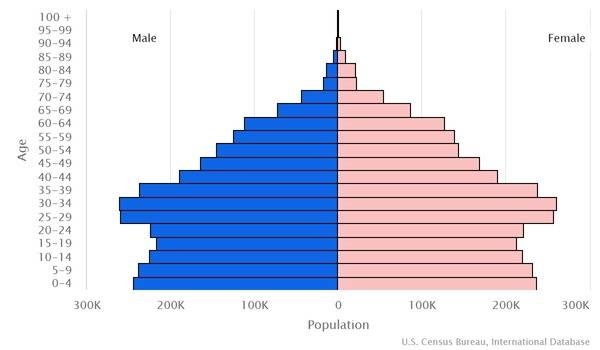Country Summary




Introduction
Background
Present-day Turkmenistan covers territory that has been at the crossroads of civilizations for centuries. The area was ruled in antiquity by various Persian empires, and was conquered by Alexander the Great, Muslim armies, the Mongols, Turkic warriors, and eventually the Russians. In 1924, Turkmenistan became a Soviet republic; it achieved independence upon the dissolution of the USSR in 1991.
Geography
Area
total: 488,100 sq km
land: 469,930 sq km
water: 18,170 sq km
Climate
subtropical desert
Natural resources
petroleum, natural gas, sulfur, salt
People and Society
Population
5,636,011 (2022 est.)
Ethnic groups
Turkmen 85%, Uzbek 5%, Russian 4%, other 6% (2003 est.)
Languages
Turkmen (official) 72%, Russian 12%, Uzbek 9%, other 7%
Religions
Muslim 93%, Christian 6.4%, Buddhist <1%, folk religion <1%, Jewish <1%, other <1%, unspecified <1% (2020 est.)
Population growth rate
0.99% (2022 est.)
Government
Government type
presidential republic; authoritarian
Capital
name: Ashgabat (Ashkhabad)
Executive branch
chief of state: President Serdar BERDIMUHAMEDOW (since 19 March 2022); note - the president is both chief of state and head of government
head of government: President Serdar BERDIMUHAMEDOW (since 19 March 2022)
Legislative branch
description: bicameral National Council or Milli Genesi consists of:
People's Council or Halk Maslahaty (56 seats; 48 members indirectly elected by provincial councils and 8 members appointed by the president)
Assembly or Mejlisi (125 seats; members directly elected in single-seat constituencies by absolute majority vote in 2 rounds if needed to serve 5-year terms)
note: in September 2020, the Turkmenistani legislature (Milli Genesi) adopted a constitutional amendment creating an upper chamber, making the legislature bicameral; the chairperson of the Halk Maslahaty is now designated as the constitutional successor to the presidency; as of March 2022, Gurbanguly BERDIMUHAMEDOW continues to serve in this position after stepping away from the presidency
Economy
Economic overview
upper middle-income Central Asian economy; has 10% of global natural gas reserves, exporting to Russia and China; natural resource rich; authoritarian and dominated by state-owned enterprises; major central-south Asian pipeline development
Real GDP (purchasing power parity)
$92.33 billion (2019 est.)
Real GDP per capita
$15,500 (2019 est.)
Agricultural products
milk, wheat, cotton, tomatoes, potatoes, watermelons, grapes, sugar beet, beef, rice
Industries
natural gas, oil, petroleum products, textiles, food processing
Exports
$7.458 billion (2017 est.)
Exports - partners
China 82% (2019)
Exports - commodities
natural gas, refined petroleum, crude petroleum, cotton fibers, fertilizers (2019)
Imports
$4.571 billion (2017 est.)
Imports - partners
Turkey 25%, Russia 18%, China 14%, Germany 6% (2019)
Imports - commodities
iron products, harvesting machinery, packaged medicines, broadcasting equipment, tractors (2019)
Exchange rates
Turkmenistani manat (TMM) per US dollar -
Page last updated: Wednesday, June 15, 2022
